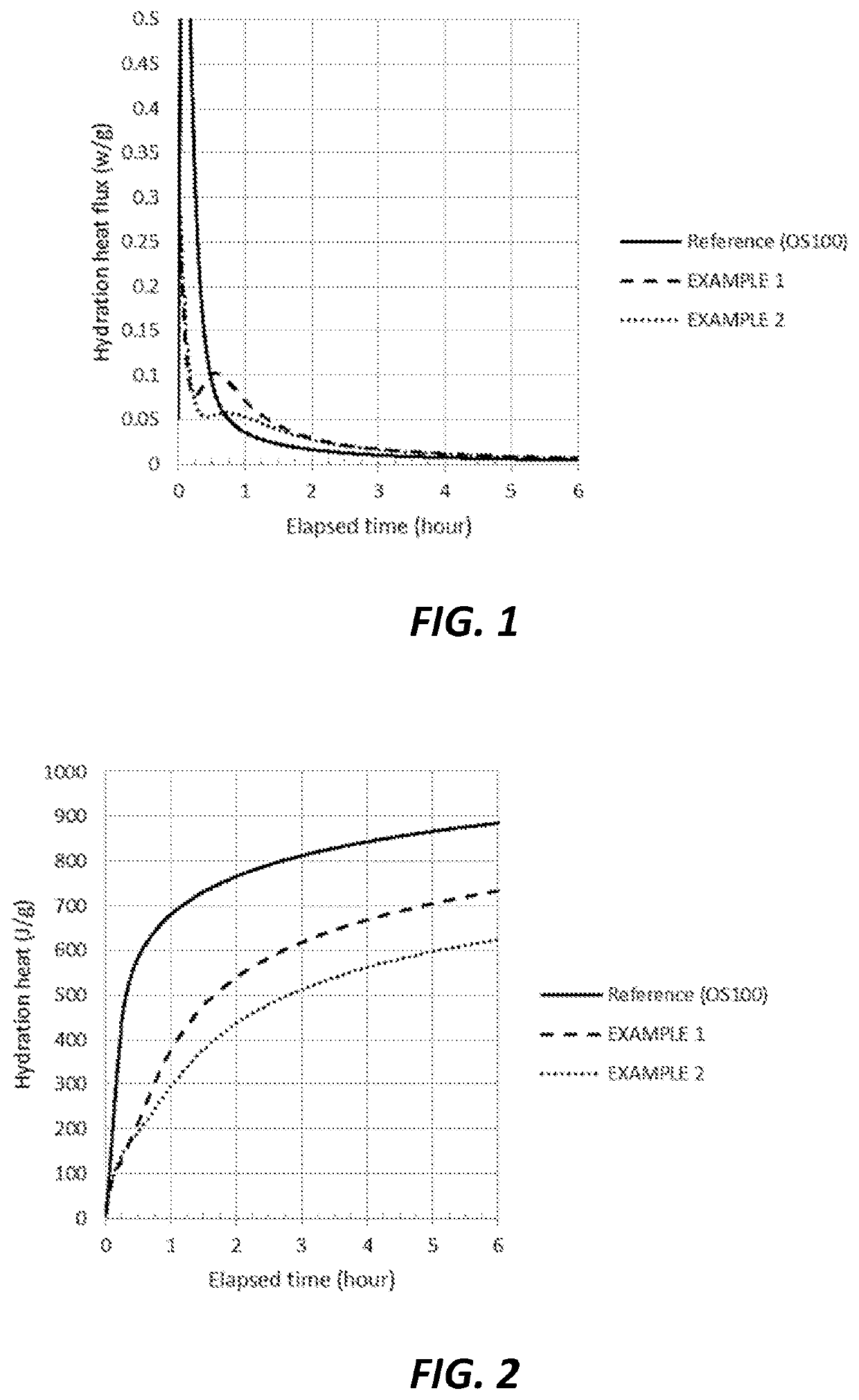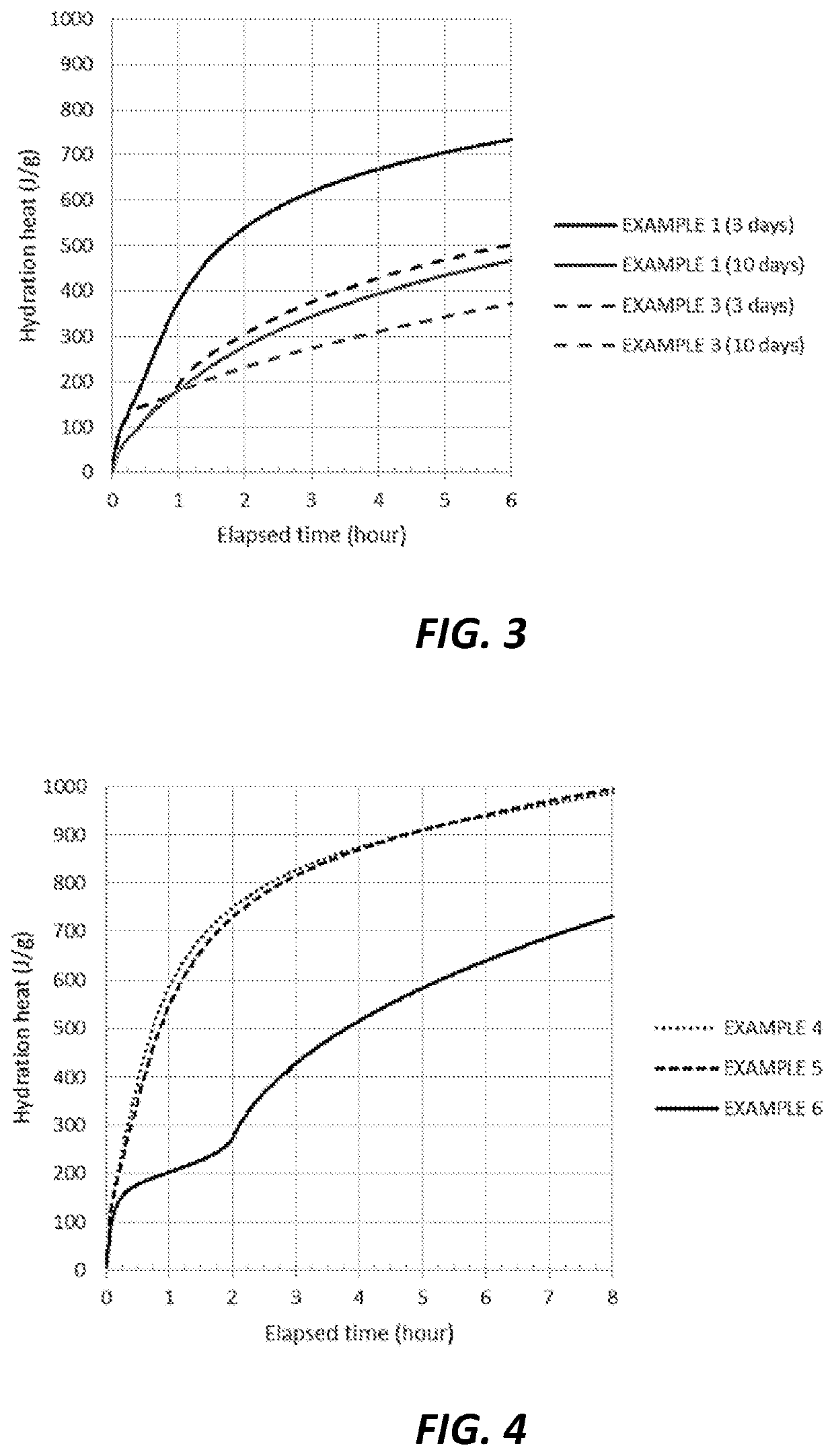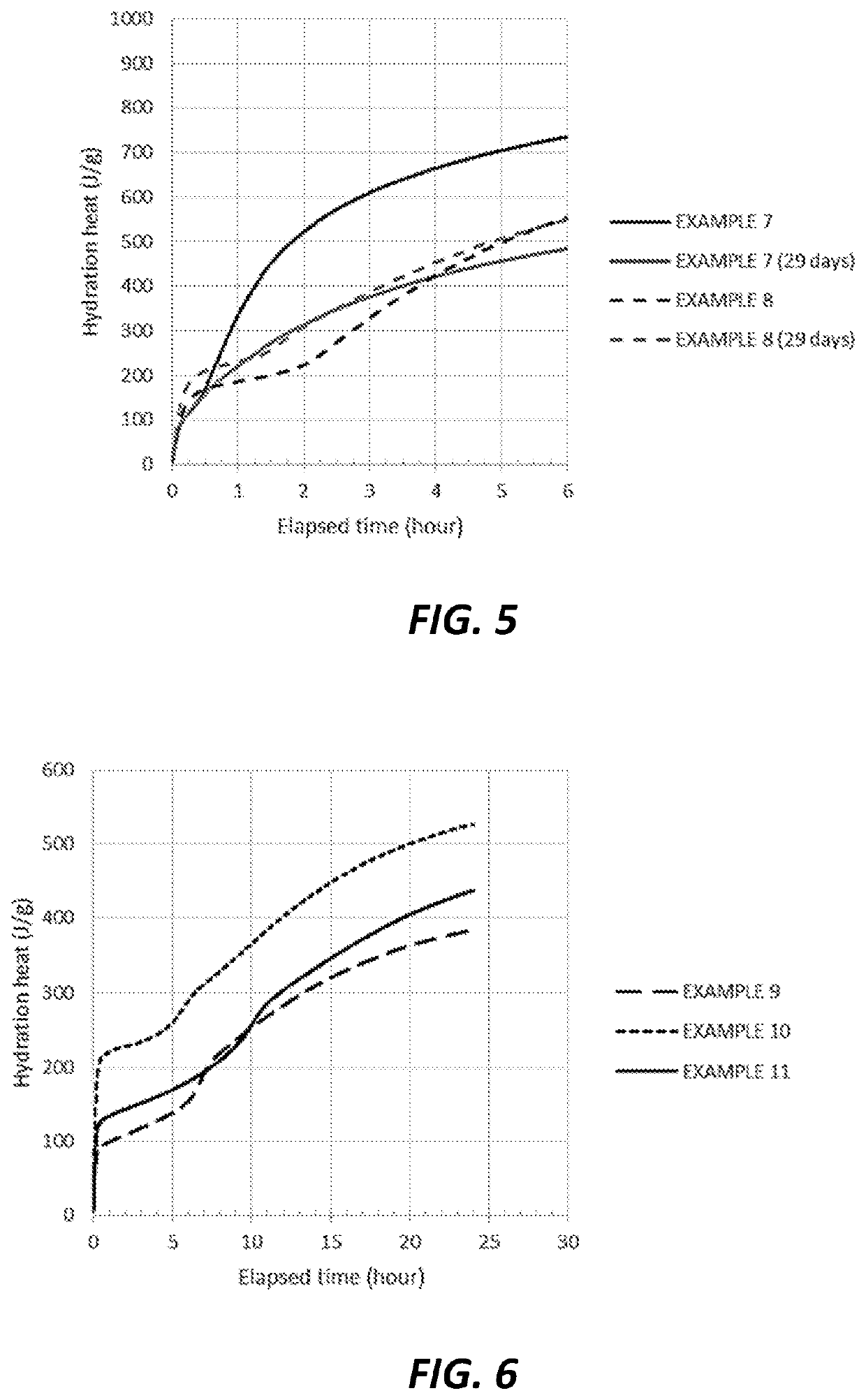Controlled hydration of quicklime
a technology of quicklime and controlled hydration, which is applied in the direction of climate sustainability, solid waste management, sustainable waste treatment, etc., can solve the problems of difficult control, rapid exothermic reaction, and inability to readily find calcined products
- Summary
- Abstract
- Description
- Claims
- Application Information
AI Technical Summary
Benefits of technology
Problems solved by technology
Method used
Image
Examples
examples
Mixture Preparation and Hydration Behavior
examples 1 to 3
[0080]Calcium oxide (quicklime) (available commercially under the brand name PetroCal® OS100, Mississippi Lime Co., St. Louis, Mo.) was mixed with a mixture of organic liquid as shown in Table 1. According to Karl-Fisher analysis, the hexyleneglycol (HG) used in the examples contained 1.22%±0.01% (0.84% RSD). The slurry samples were aged for three days. Another hydration measurement was conducted at the age of 10 days.
[0081]The resultant slurry, paste or powder was subjected to calorimetric study whereby its hydration behavior could be analyzed over time. A calorimeter, a CALMETRIX I-Cal 8000™ device, was used for this analysis. Samples containing 1 gram of CaO were mixed with 2 mL of lime saturated water containing 1.4% potassium sulfate (K2SO4). The slurry was mixed quickly and placed in the calorimeter at a temperature of 21° C.
[0082]
TABLE 1Test mixture compositions with high moisture hexyleneglycol (HG)Calcium oxideHexyleneglycolWaterPropylenecarbonate(CaO)(HG)(H2O)(PrC)Example ...
examples 4 to 6
[0085]Calcium oxide (quicklime) (available commercially under the brand name PetroCal® OS100, Mississippi Lime Co., St. Louis, Mo.) was mixed with a mixture of organic liquid as shown in Table 2. According to Karl-Fisher analysis, the hexyleneglycol (HG) used in the examples contained 0.54%±0.01% (1.55% RSD). Polyethyleleglycol (PEG) with molecular weight 10,000 g / mol was added to stability of CaO and HG slurry or suspension by preventing CaO sedimentation in Example 5. PEG was heated and pre-mixed with HG.
[0086]
TABLE 2Test mixture compositions with low moisture hexyleneglycol, HG.CaOHGH2OPrCPEGExample 413.3 g5.0 g——(0022-34C)Example 513.5 g5.0 g——0.53 g(0022-34D)Example 613.7 g5.1 g0.73 g1.03 g(0022-34B)
[0087]FIG. 4 graphically illustrates calorimetry data reflecting hydration behavior of the slurries. As shown in FIG. 4, the addition of water and PrC creates 2 hour induction time of CaO hydration. The induction time is beneficial for concrete shrinkage reduction applications becau...
PUM
| Property | Measurement | Unit |
|---|---|---|
| mean surface diameter | aaaaa | aaaaa |
| mean surface diameter | aaaaa | aaaaa |
| length | aaaaa | aaaaa |
Abstract
Description
Claims
Application Information
 Login to View More
Login to View More - R&D
- Intellectual Property
- Life Sciences
- Materials
- Tech Scout
- Unparalleled Data Quality
- Higher Quality Content
- 60% Fewer Hallucinations
Browse by: Latest US Patents, China's latest patents, Technical Efficacy Thesaurus, Application Domain, Technology Topic, Popular Technical Reports.
© 2025 PatSnap. All rights reserved.Legal|Privacy policy|Modern Slavery Act Transparency Statement|Sitemap|About US| Contact US: help@patsnap.com



